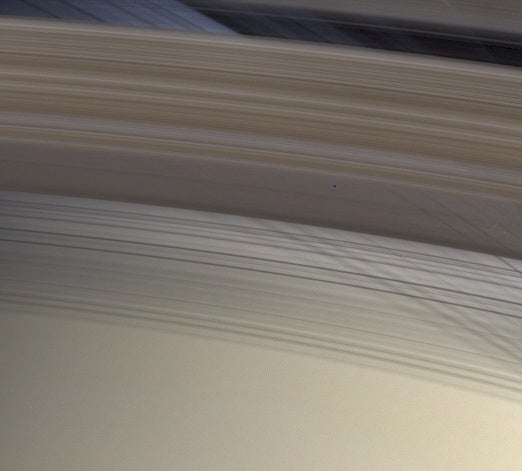In the theater, where computer-generated special effects are understandably limited, an important item in a set-designer’s toolkit is a scrim, a transparent fabric hung before part of the stage. An audience sees actors and the set through the gauze, but the fabric provides a surface where lighting effects can create just the right mood.
The delicate threads of Saturn’s C ring form a scrim in this view captured by the Cassini spacecraft. The planet and its rings would nearly fill the space between Earth and the Moon, yet the rings are only a few meters thick and, in some places, nearly transparent. One of those places is the C ring, innermost of the major rings and so diffuse it’s sometimes called the “crepe ring.” Another, the Cassini Division, arcs across the top of this image. This unusually thin span is well known to astronomers as the gap between the bright A and B rings.
When Cassini’s camera looked at Saturn July 30, it caught part of the B and C rings against Saturn’s pale atmosphere. In this true-color image, the planet looks bluer where we view it through the Cassini Division; the cloud-free upper reaches of Saturn’s atmosphere preferentially scatter blue light.
Dense trails in the C ring are seen in silhouette against the planet. More remarkable, though, are their shadows — visible as dark threads — on the backdrop of Saturn’s hazy atmosphere. Cassini took the image with its narrow-angle camera while 4.7 million miles (7.6 million kilometers) from Saturn.
A proper scrim should help set a mood, so what emotion does the C ring here evoke? Try wonder, for starters.










